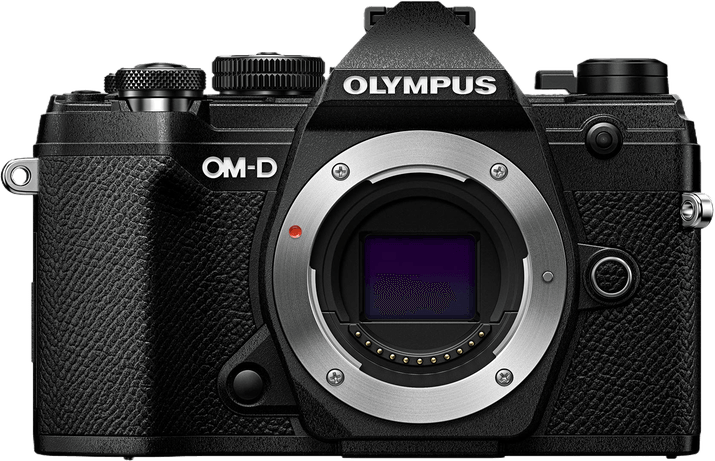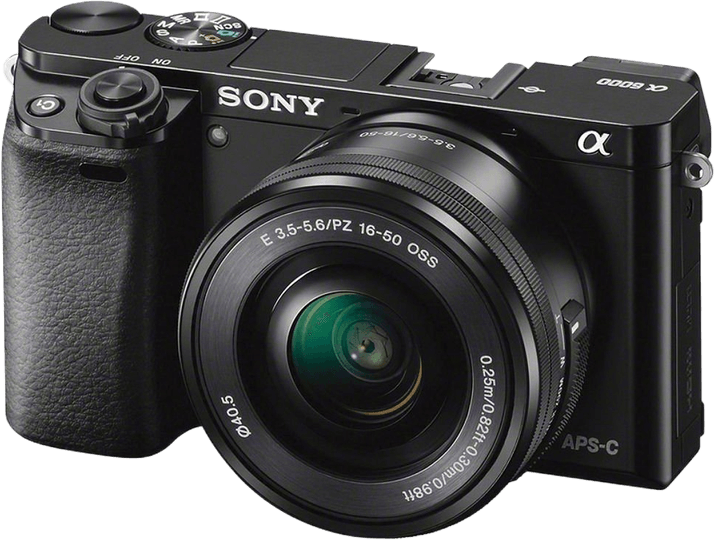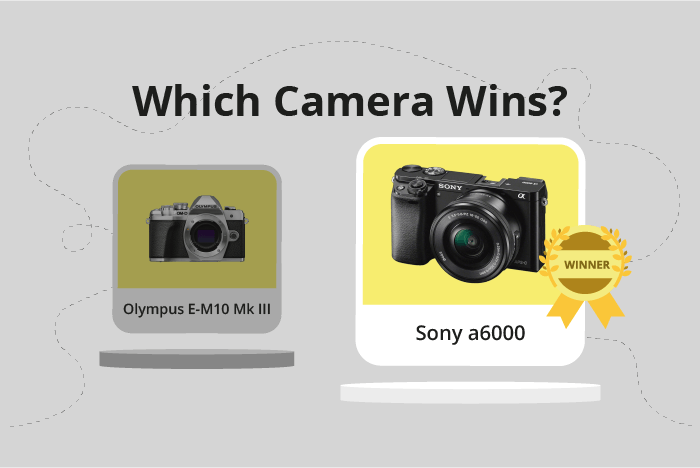Olympus OM-D E-M10 Mark III vs Sony a6000 Comparison
Olympus OM-D E-M10 Mark III

Sony a6000

The Sony a6000 outperforms the Olympus OM-D E-M10 Mark III with a score of 57/100 versus 54/100. Both cameras are mirrorless and were released in 2014 and 2017, respectively. They share similarities in size, with the Sony a6000 being slightly smaller and lighter at 120 x 67 x 45mm and 344g compared to the Olympus OM-D E-M10 Mark III’s 122 x 84 x 50mm and 410g.
The Sony a6000 offers better performance, justifying its higher score. However, the Olympus OM-D E-M10 Mark III has its advantages, such as a more recent release date and a lower launch price of $650 compared to the Sony a6000’s $799. Each camera has its strengths, and the choice ultimately depends on the user’s preferences and budget.
Olympus OM-D E-M10 Mark III vs Sony a6000 Overview and Optics
The Sony a6000 emerges as the winner in the optics comparison, scoring 67/100, while the Olympus OM-D E-M10 Mark III scores 57/100. Both cameras share common specifications, such as CMOS sensor type and similar processors – TruePic VIII for Olympus and Bionz X for Sony.
The Sony a6000 excels with its 24.3-megapixel resolution, faster shooting speed of 11 fps, and a higher DXOMARK score of 82 for the sensor. Additionally, the camera has a larger APS-C sensor size and a Sony E lens mount, contributing to better image quality and compatibility with a wider range of lenses. The aspect ratio of 3:2 is also more suitable for print formats.
On the other hand, the Olympus OM-D E-M10 Mark III has a lower resolution of 16 megapixels, a slower shooting speed of 8.6 fps, and a smaller Micro Four Thirds sensor size. The DXOMARK score for the sensor is 73, and the lens mount is Micro 4/3. However, the Olympus camera offers image stabilization, which the Sony a6000 lacks. This feature helps reduce camera shake and results in sharper images, especially in low-light conditions or when using longer focal lengths. The 4:3 aspect ratio is more suited for digital display.
Despite the lower score, the Olympus OM-D E-M10 Mark III has its advantages, particularly in image stabilization. However, the Sony a6000 outperforms the Olympus in most optical aspects, including resolution, shooting speed, sensor size, and lens compatibility. As such, the Sony a6000 is the superior choice for those prioritizing image quality and versatility.
Olympus OM-D E-M10 Mark III vs Sony a6000 Video Performance
The Olympus OM-D E-M10 Mark III emerges as the winner in the video capabilities comparison, scoring 83/100, while the Sony a6000 trails behind with a score of 56/100. Both cameras share a common specification in their maximum video frame rate, which is 60fps. However, the similarities end there, and the differences in their video features become apparent.
The Olympus OM-D E-M10 Mark III excels with its 4K maximum video resolution and dimensions of 3840 x 2160, offering a higher quality video output than the Sony a6000. Additionally, this camera has a built-in time-lapse functionality, enabling users to create stunning time-lapse videos without the need for external software or devices.
On the other hand, the Sony a6000’s maximum video resolution is limited to Full HD, with dimensions of 1920 x 1080. This resolution is lower than that of the Olympus OM-D E-M10 Mark III, resulting in a less detailed video output. Moreover, the Sony a6000 lacks built-in time-lapse functionality, which may disappoint users who wish to create time-lapse videos without resorting to third-party tools.
Despite the lower video score, the Sony a6000 still offers a decent video quality with its Full HD resolution and 60fps frame rate, suitable for casual video shooting or users who do not require the higher resolution of 4K. However, for those seeking higher video quality and the convenience of built-in time-lapse functionality, the Olympus OM-D E-M10 Mark III is the superior choice.
Olympus OM-D E-M10 Mark III vs Sony a6000 Features and Benefits
The Olympus OM-D E-M10 Mark III emerges as the winner in this comparison with a feature score of 57/100, while the Sony a6000 lags behind with a score of 41/100. Both cameras have some common specifications, including a 3-inch screen size, flip screen, absence of GPS, and the presence of WiFi connectivity. Neither camera has Bluetooth capabilities.
The Olympus OM-D E-M10 Mark III outperforms the Sony a6000 in terms of screen resolution and touchscreen functionality. The screen resolution of the E-M10 Mark III is 1,040,000 dots, which is higher than the a6000’s 921,600 dots. This higher resolution results in a sharper and clearer display. Additionally, the E-M10 Mark III has a touchscreen, while the a6000 does not. Having a touchscreen allows for easier navigation and control of the camera, making the E-M10 Mark III more user-friendly.
Although the Sony a6000 has a lower feature score, it still has its advantages. One of the main similarities between the two cameras is their flip screen, which enables users to shoot from different angles and positions. Furthermore, the a6000 matches the E-M10 Mark III in terms of screen size and WiFi connectivity. These shared features ensure that the a6000 is still a competitive option in the market.
Taking into account the differences in feature scores and the advantages of each camera, it is clear that the Olympus OM-D E-M10 Mark III is a better choice due to its higher screen resolution and touchscreen capabilities. However, the Sony a6000 remains a viable option for those who prioritize flip screen functionality and WiFi connectivity.
Olympus OM-D E-M10 Mark III vs Sony a6000 Storage and Battery
The Olympus OM-D E-M10 Mark III and the Sony a6000 have the same storage and battery score, both at 21/100. Both cameras feature a single memory card slot and support SD, SDHC, and SDXC cards. The Olympus is compatible with UHS-II cards, while the Sony also accepts Memory Stick Pro Duo and Pro-HG Duo cards.
The Olympus E-M10 Mark III has a battery life of 330 shots, using the BLS-50 battery type. The Sony a6000 lasts slightly longer with 360 shots per charge, using the NP-FW50 battery type. Neither camera offers USB charging.
Despite the Olympus’ compatibility with faster UHS-II cards, the Sony a6000 has a marginally better battery life, making it the preferable choice for extended shooting sessions. The Olympus, however, may appeal to users who prioritize faster memory card performance. Both cameras have their strengths in storage and battery aspects, but neither significantly outperforms the other in this category.
Olympus OM-D E-M10 Mark III vs Sony a6000 – Our Verdict
Are you still undecided about which camera is right for you? Have a look at these popular comparisons that feature the Olympus OM-D E-M10 Mark III or the Sony a6000:

